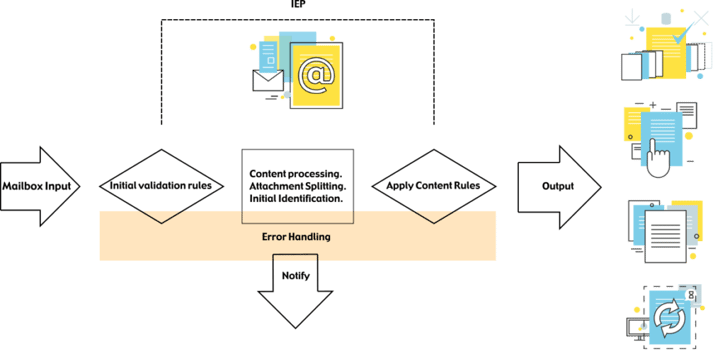Whilst strolling through the Cotswolds a few days back, taking some precious time away from family...
Do you fear your inbox (part 2)
You have unsubscribed from all the meaningless marketing emails (think of the carbon savings), removed yourself from being further CC’d on those emails your colleague(s) thought you might need to be aware of and redirected a few outside contacts to a more appropriate associate to hassle. Inbox looking better?
What you should be left with is what you need to know (like the newsletter linking to this blog) and the emails requiring action by you or your department, however, there are still many of them that require manual allocation / transfer to be processed and need to be stored for future reference. (You might want to check last month’s part one for a refresher)

Mailboxes are not an ideal location for the ongoing storage of business information.
Those emails that remain possibly contain information within their body of text or attachments that need to be saved for reference or even trigger further business processes. So where do you save yours? Email archive file? Oh dear… Shared drive on the company network? Marginally better… Disparate application storage locations based on content? Getting there… Centralised document management / Enterprise Content Management platform? Now you are talking!!!
In an ideal, digitally transformed business place, everything of business worth would be stored, just the once, in your central document management system with all required business processes being driven by that content. Every relevant piece of content is easily locatable, viewable, shareable (as required) and controlled until its end of life.
How to start the migration from mail to management?
The first ‘easy’ step would be to use simple drag and drop functions and mail client integrations offered by an existing document management platform – ImageView, DocuWare and Invu all offer this feature allowing the rapid index of content direct into the repository.
The better way though would be to prevent the majority of this content ever reaching a personal mailbox and have it indexed through automation. This will take a little thought and process analysis up front but once implemented as the new way, you’ll never look back! Whilst both DocuWare and Invu have mail automation options, we shall focus on PacSol’s platform independent solution, the Inbound Email Processor (IEP). This highly configurable solution can run on Windows, Linux or IBM i and can interface with a range of mail sources and independently export processed results in a variety of formats.

A typical IEP scenario may involve monitoring the content of a shared or centralised mailbox – salesorders@ or claims@ for example – where content for storage and process is regularly received that has a material impact on your business. IEP could be simply configured to process the email (and any attachments) into a basket or initial index queue within your document repository OR it could fully analyse the content, OCR the text, create custom index output for each object and then process this into your repository allowing any configured workflow to immediately begin based on the content. IEP can and will also monitor multiple mailboxes and process the content of those against independent criteria, simultaneously.
So what would you automate first? Incoming invoices? New order forms? Employee applications? Customer feedback responses? Anywhere in your business that receives consistent, business relevant, process driving content should give automated index and centralised storage serious consideration for implementation. Take the storage of business critical information away from personal mailboxes and into an optimised central content platform. Get in touch with PacSol – Email, LinkedIn, even call us – and we will happily discuss where automation can make a real difference to your business and relieve your own inbox pain!

Toby Gilbertson, Customer Services Manager. May 2022.
#PacSolUK #EnterpriseContentManagement #DocumentManagement #BusinessProcessAutomation #Email



